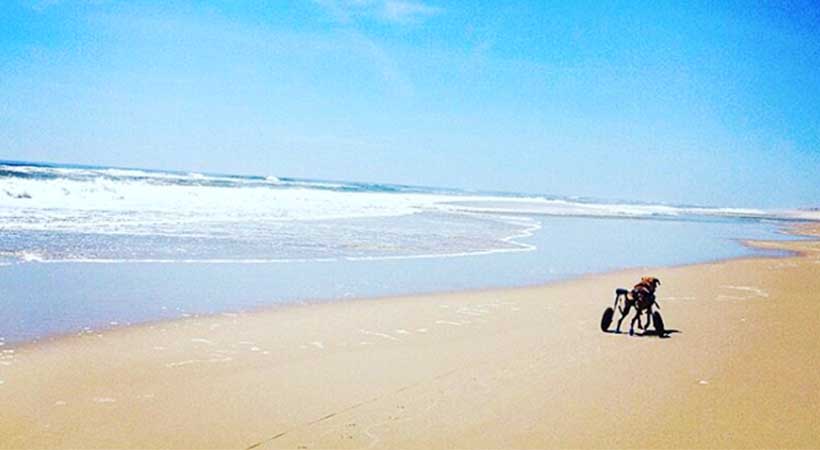Ataxia in Dogs: Causes, Symptoms, Treatment, and Care

7 Tips on How to Take a Vacation with Your Pet
Our pets are a big part of our family, right down to sleeping in our bed and sharing meals with us. So when you think about taking a vacation with your pets, it’s natural to want to bring them along.
Some pets are great travelers and some are not. These tips will help you have the best vacation you can with your pets.
Don't Forget What You'll Need: Make a List
Making a list of everything you’ll need is the easiest way to make sure you don’t forget something.
Things you’ll definitely need: 
- a leash
- dog dish
- waste bags
- toys
- food
- treats
- your dog’s collar and tags
- a flashlight for walks in the dark
Things you might need:
- a dog brush
- blanket
- pet bed
Keep Safety in the Forefront
- Before you hit the road, do some research into vet clinics in the area. You never know when something could happen, and you’ll want to be prepared.
- Write down a list of addresses and numbers along your route. Check out reviews of the clinics to make sure they are respectable and safe.
- Make an appointment with your vet to make sure your dog is fit to travel. Be sure microchips are in working order.
- Bring your vaccination records in case you need to prove your pet is up to date.
Vehicle Safety and Travel Considerations
Safety in the car is extremely important, especially since your dog can be expelled from a vehicle in an accident.
- Car safety harnesses are a great way to keep your pet restrained.
- Use ramps or steps to help elderly or disabled pets get into your car.
- Don’t forget to stop along the way to let your pet potty and stretch his legs.
- Don’t ever leave your pet in the car unattended. Even if the windows are cracked, the temperature inside a parked car can still get up to 120 degrees on a 95ᴼ day.
- If you’re taking public transportation, make sure pets are allowed. Many buses and airplanes don’t allow pets unless they are registered service animals.
Choosing A Place to Stay
Ask yourself these questions before you pick a place to stay:
- Is it pet-friendly?
- Is there a pet fee?
- Are there refundable or nonrefundable pet deposits?
- What about a cleaning fee?
Some places restrict the number of pets you can bring, and they may even have weight and breed restrictions. Take your pet’s crate in case you need to leave him or her in the room. And bring their favorite items, like a bed or toys, to make them feel comfortable.
Stock up on the Right foods for Travel
Don’t make any changes to your dog’s diet as you travel. If you make changes, you might upset your dog’s digestive system, and he or she might have an accident.
- You should feed your dog good quality food.
- A great way to pack your dog’s food is to buy samples of your pet’s brand at the pet store. These perfectly-sized, convenient portions will save space in your suitcase.
- Don’t forget about treats!
- Keep your dog hydrated. Traveling takes a toll, and a dehydrated dog is a tired dog.
Keep Your Pet Engaged with Activities and Toys
Keep your dog entertained by planning activities for him or her!
- Does the location you're at have mountains? Take your dog for a hike. Pack a pet transport stretcher in case your pet becomes injured.
- What about lakes or the ocean? If your dog loves the water, he or she will love to jump in for a swim.
- Bring the right equipment! Keep your dog’s paws free from painful cracks by using boots if the terrain is going to be different from your pet’s usual routine.
- Take a swim vest to keep your dog safe in the water.
- Don’t forget toys for playing in the park.
Special Considerations for a Senior or Disabled Pet
Elderly and handicapped dogs may need extra items:
- Bring any medications or supplements with you that your elderly pet needs.
- If your pet has incontinence problems, pet diapers and/or puppy pads are great options.
- If your dog uses a wheelchair, make sure it's on the list so you don't forget it!
Let your relationship be your guide
The most important tip is to know your pet. You know what will keep your dog happy and feeling safe on the road. Your bond with your pet is one of the greatest things in the world. Use it to your advantage to anticipate his or her wants and needs. Breathe deep, and enjoy your vacation!









